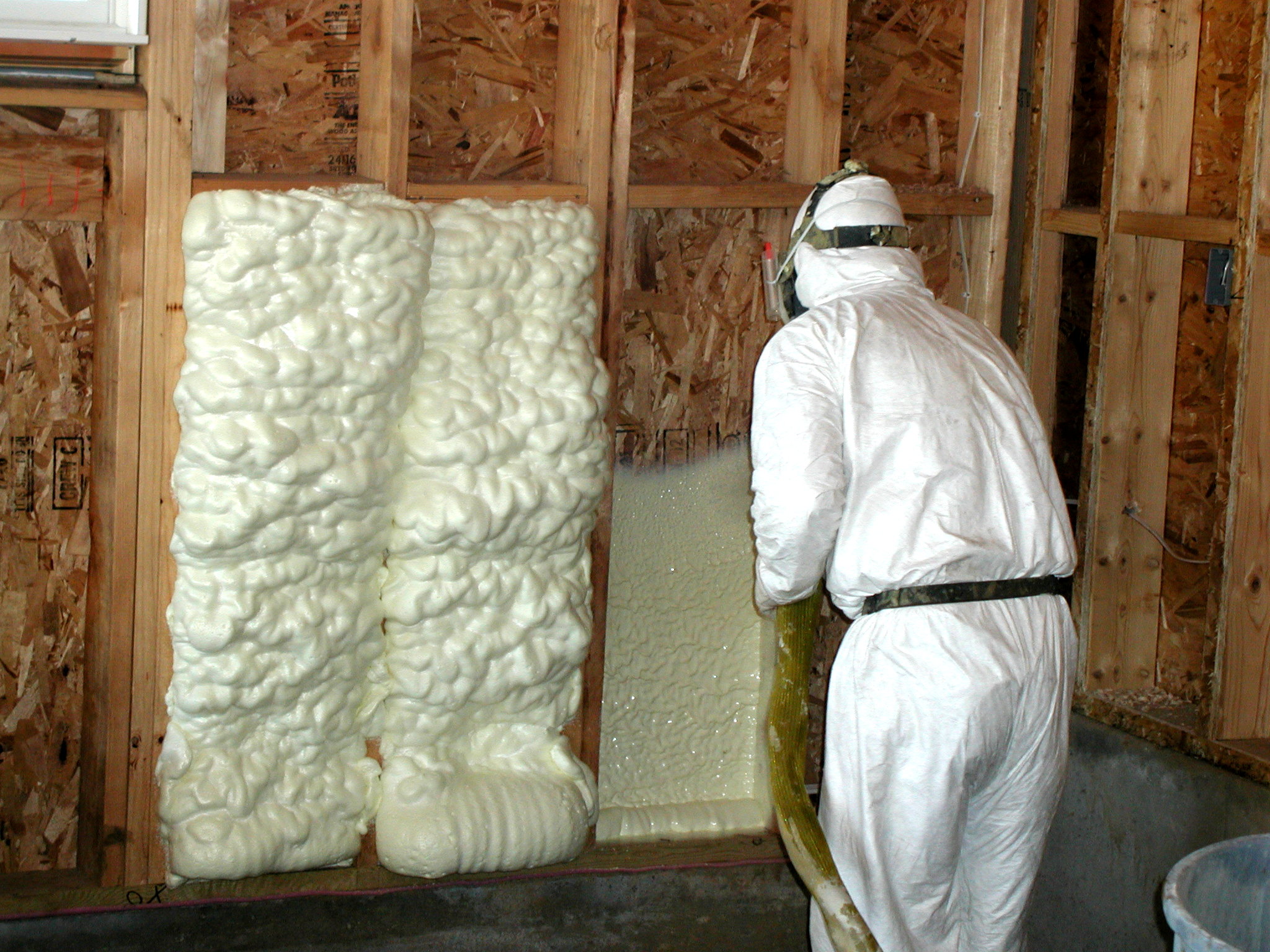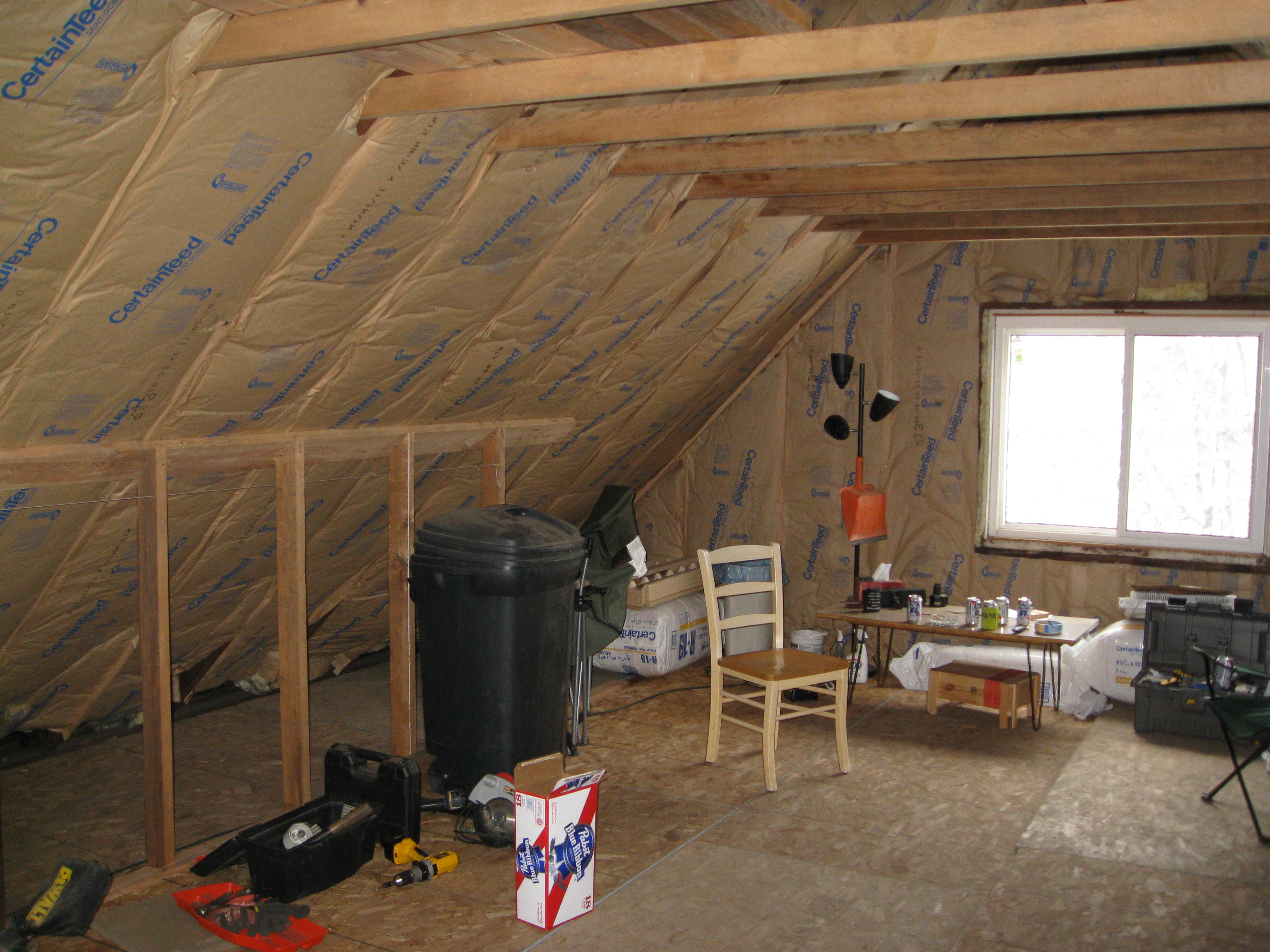Hi Tech ‘Windows’ Instead of AC In a New Commercial Building
This is another ‘I just can’t shut it off’ post.

My oldest buddy Tim Hall, who I’ve known since we were 7, turned into a process engineer* at a large manufacturing firm, and for the second time he is supervising the addition on a manufacturing plant.
We had lunch yesterday and he gave me a tour** of the new addition and some of the ‘green’ features. He considered going LEED with the building, but rejected it due to cost, too many hoops to jump through, and the fact that LEED was not well designed for manufacturing plants.
That didn’t stop him from installing a few features that I really liked.
1. Large HVLS (High Velocity Low Speed) ceiling fans to de-stratify the air in the building and make the ceiling and floor temperatures nearly equal.
2. A system of ‘windows’ like a house without air conditioning that opens the windows at night to cool the house, then closes them in the morning. Custom software was built for it.
3. Daylighting in the new office area that dims the lights to save energy when the sun is shining. The square light is a skylight, the longer ones are flourescent.
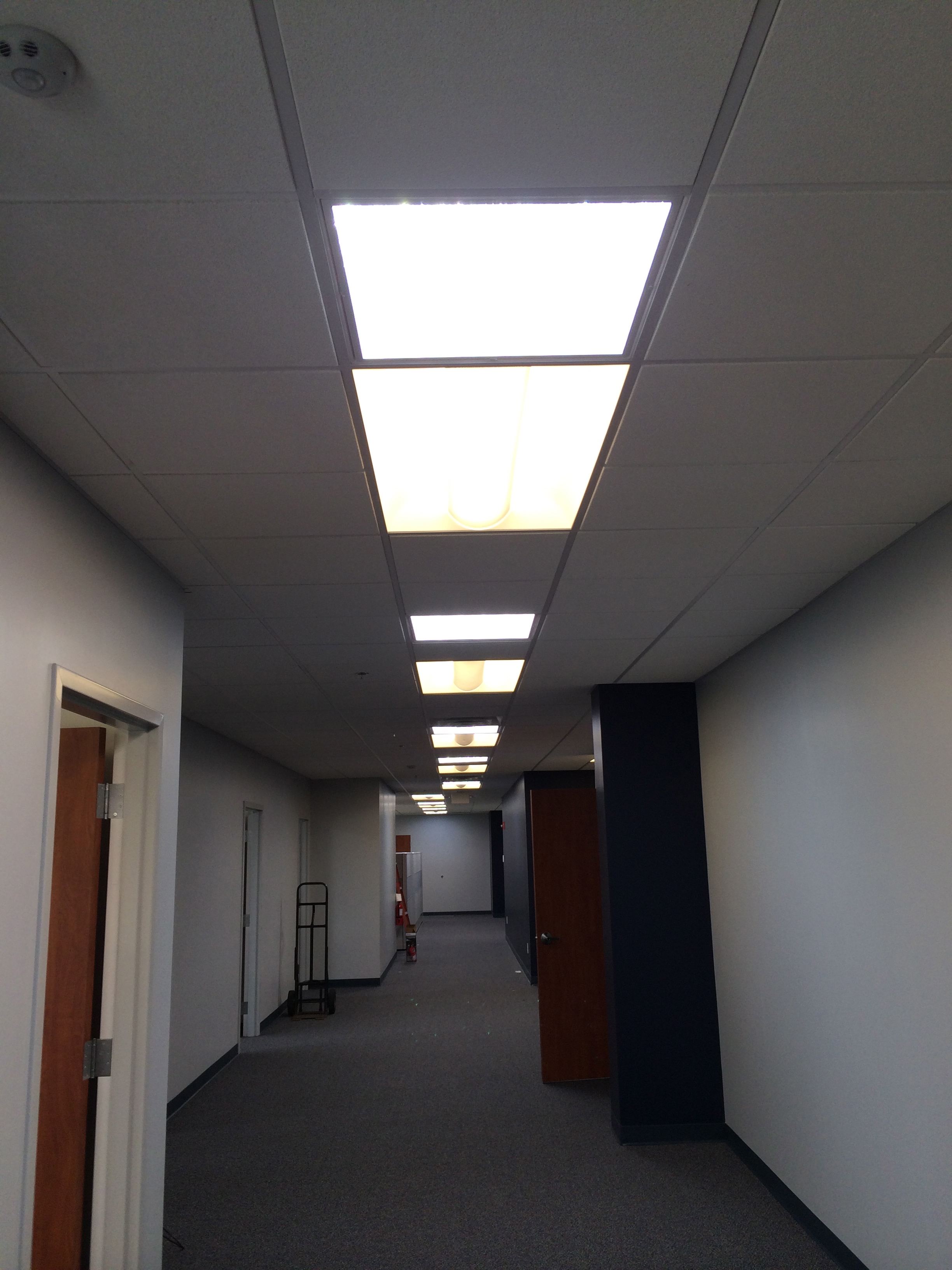
Last year, Tim noticed that there was a nearly 30 degree temperature difference (delta T) between the floor and the ceiling in the original manufacturing plant. He experimented with Serco HVLS fans which are a 20 foot diameter ceiling fan to mix the air. They dropped the delta T to about 3 degrees. Coupled with cross flows, they also markedly improved the comfort in the building, as well as productivity on hot summer days.
This led to the second piece, which really impressed me. If you grew up in a house without air conditioning, you probably know the custom of opening the windows and turning on fans at night to cool the house. Then in the morning you close the windows and keep the cool in as long as possible until the next day the sun warms it up a bunch in the afternoon.
Not wanting to take the step of air conditioning such a large space (50,000 square feet or so) but wanting to make it more comfortable for workers, Tim devised a plan along with the fan manufacturer involving 4 pieces, plus a surprising innovation:
a. Large 16′ HVLS ceiling fans to mix the air in the building and reduce convective currents. See picture above.
b. 4 reversible rooftop exhaust/intake fans to blow air into the building at night or out during the day.

. 6 louvered vents in the walls with servos to open and close.
d. A cool roof, or basically a highly reflective white roof.
e. Special Sauce – Software to make these talk to each other and operate automatically. The fan company makes the controls, but they had never controlled the other pieces like the wall louvers and rooftop fans.
So now at night on hot days, the wall vents will open, the 4 ceiling fans will blow cool air from the rooftop into the building, and the large fans will mix them. Because the roof doesn’t get substantially warm (100 degrees vs. 127 on a recent 90+ degree day), the air there is cool starting early in the evening.
Tim talked the fan company into building custom software to make all 3 motorized components work together automatically. I thought this was unsually slick.
Daylighting
But Tim wasn’t done with me yet. He installed a number of tubular skylights, which I really like because they are a much smaller hole in the thermal envelope than a large skylight. Skylights are big holes in the insulation that can easily reduce average R-value by 25%. I’m of split personality when it comes to skylights – the aesthetic part of me loves the natural light but the energy auditor part of me thinks they aren’t worth the cost in thermal efficiency. The mighty Joe Lstiburek, not-so-saintly patron saint of Building Science, has skylights in his deep retrofitted century home, so I’m not alone in this. But I digress.
What I really loved about this installation is that it was automatically adjusting. We all know that some days are sunnier than others, and the clouds come on sunny days too, especially in Cleveland. So the light fixtures in the second floor of the new office area dim when there is lots of sunlight and then burn brightly when the sun is not providing adequate light.
Here’s what the skylights look like above the ceiling.
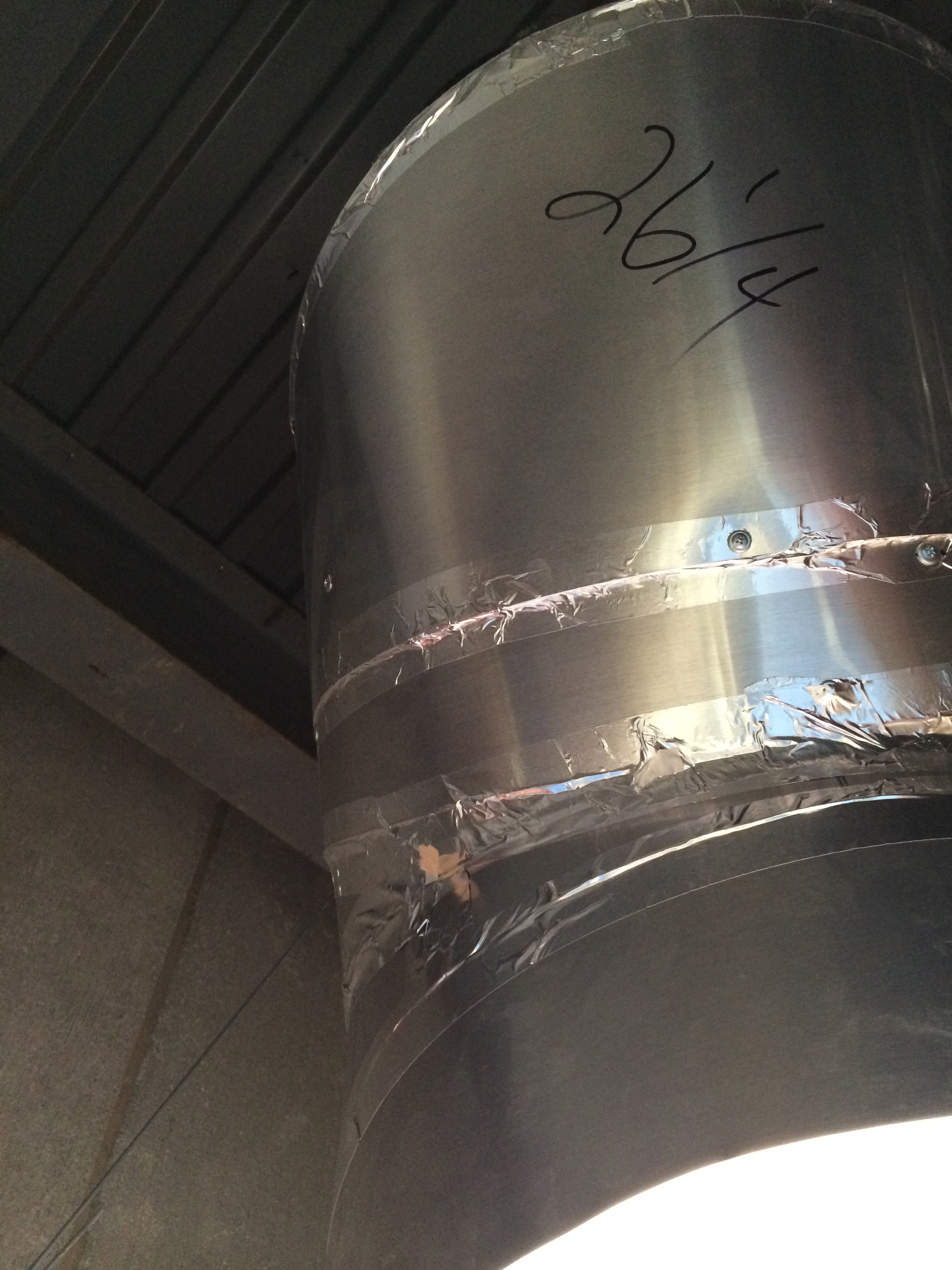
And from below.
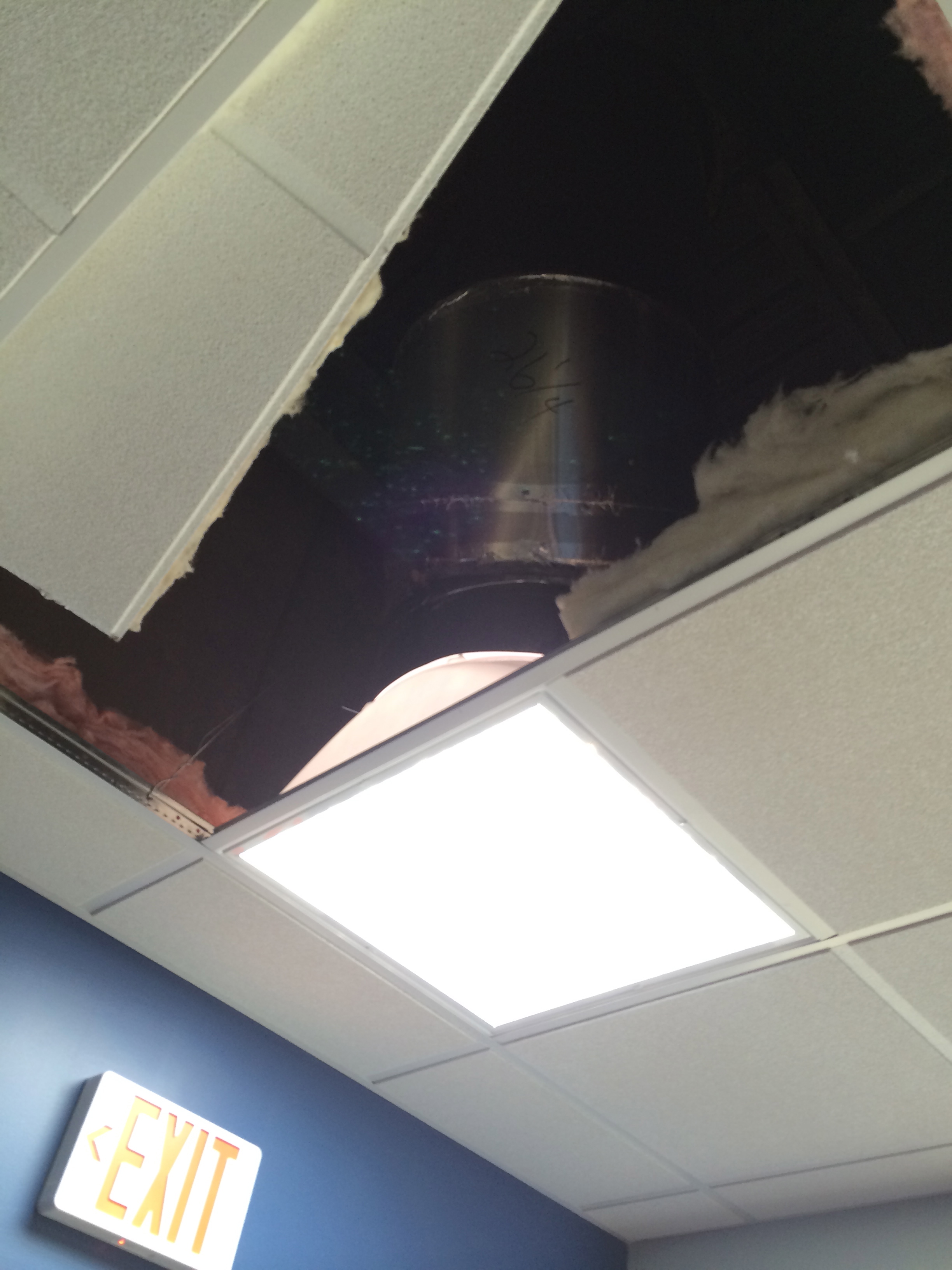
And here’s what the diffuser looks like when you look at the skylight on the ceiling. It’s like an ant’s eye. It was a day of unusually flat cloud cover, which led to a cool effect.
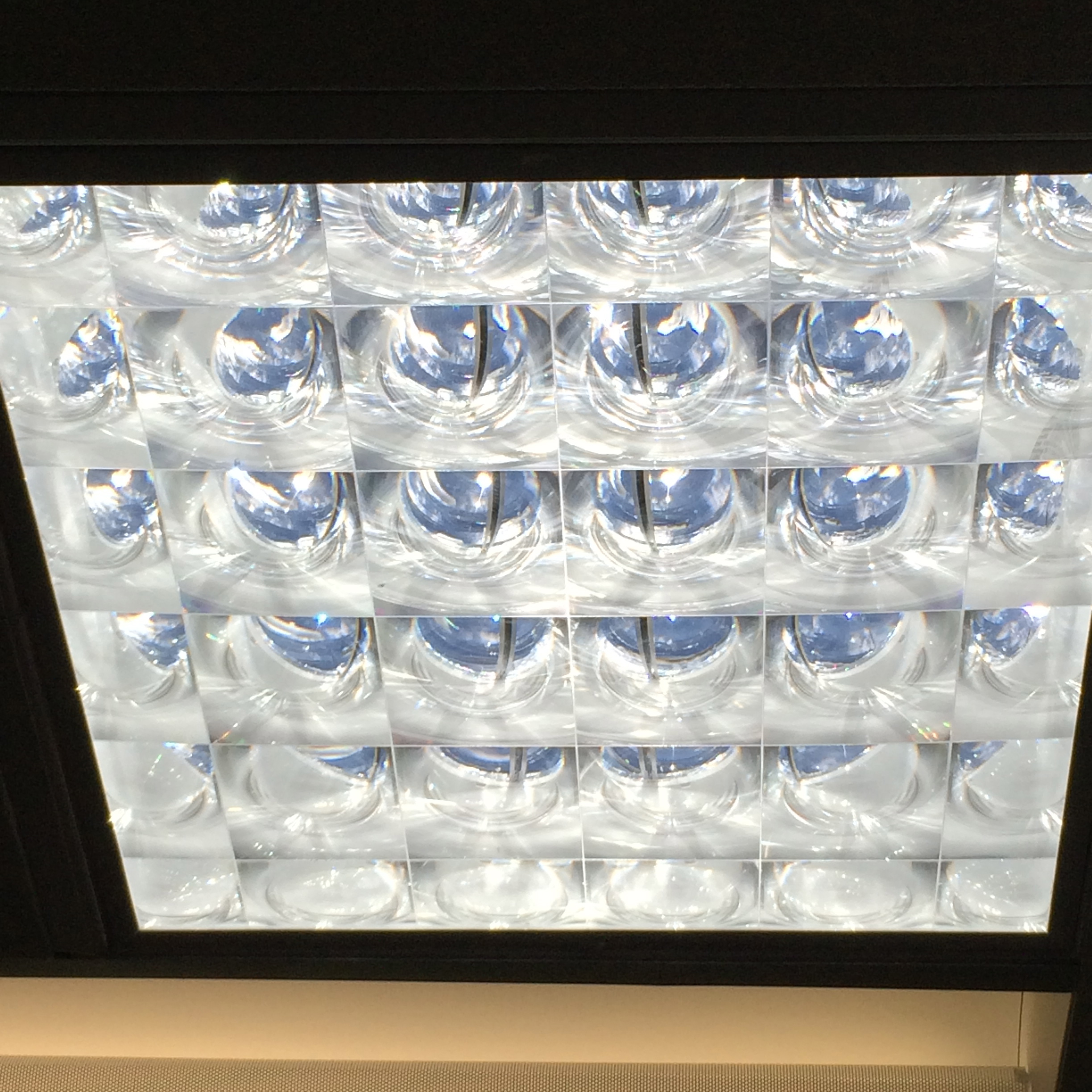
And here is what the new work area looks like with a mixture of skylights and dimmable lights.
In the conference room, there was a wall switch to open and close a damper on the 2 tubular skylights in there. I was impressed.
Nobody’s Perfect…
The only unfortunate part is that the thermal boundary, where you stop heating and cooling a building, was still not that far off the nursing home I looked at last fall and wrote about in ‘The Thermal Abomination That Is Commercial Construction.’ It was just insulation on top of a drop ceiling for the office portion, just like I see all the time. It’s not an air barrier, like the zipper on a coat, and so I question the performance of it. Nobody’s perfect, but at least it will dampen the noise from mechanicals above the ceiling and between offices.
Overall, though, I felt that the building was very innovative, and not only from my energy auditor perspective, but also in thoughtful design and layout of numerous things. Tim noodled on this building for a year before construction began, and his participation in the process is far beyond what the builder is used to having. Best yet, he’s still looking to come in under budget on the project.
And that’s what happens when I have lunch with an old friend… I just can’t turn it off…
*Our sixth grade teacher Mrs. Ritchie thought I would be the engineer and Tim the salesman. She was right, but reversed. It seems strange to be coming up on 30 years of friendship with someone…
** I don’t know about you, but by far my favorite episodes of Mr. Rogers’ Neighborhood were when he toured manufacturing plants – dolls, crayons, mushrooms come to mind first. I still LOVE a good plant tour, especially heavy manufacturing. I’ve always said guys act about 14 when girls aren’t around, this is another example, besides fart jokes…
Get the HVAC Guide

It's free! Make buying a new furnace, air conditioner, or heat pump less stressful.



